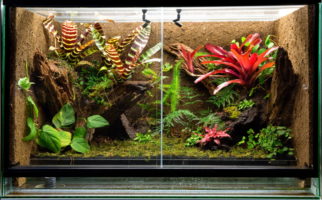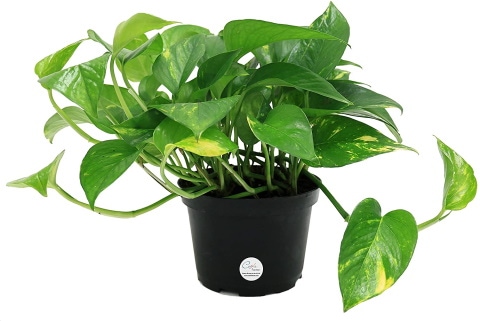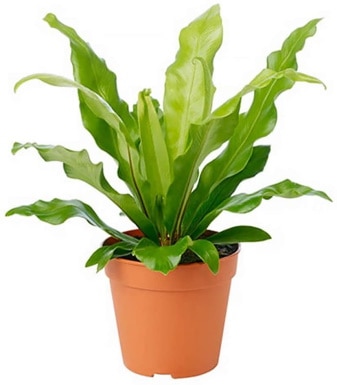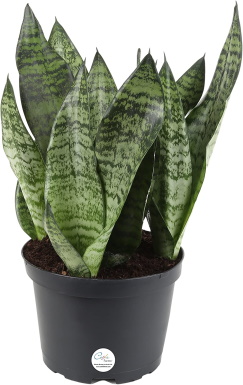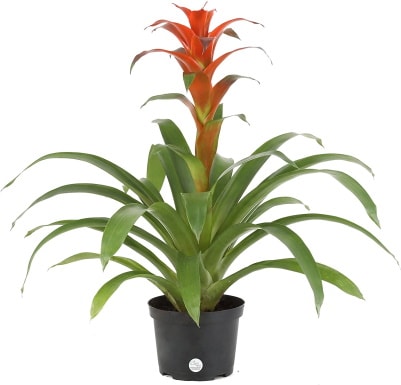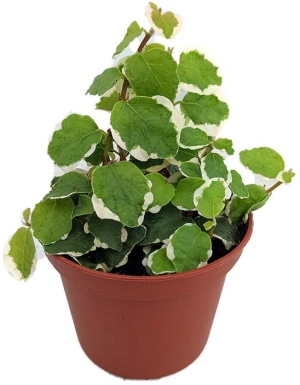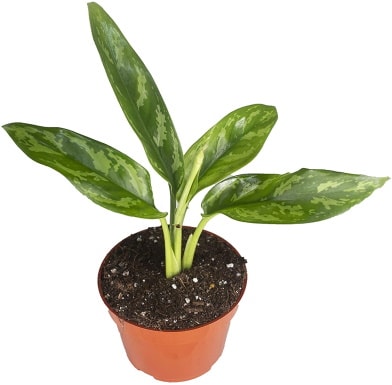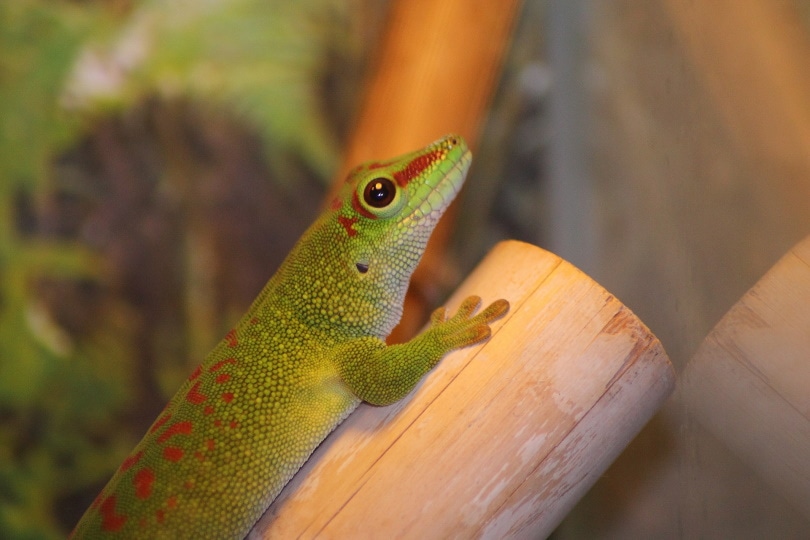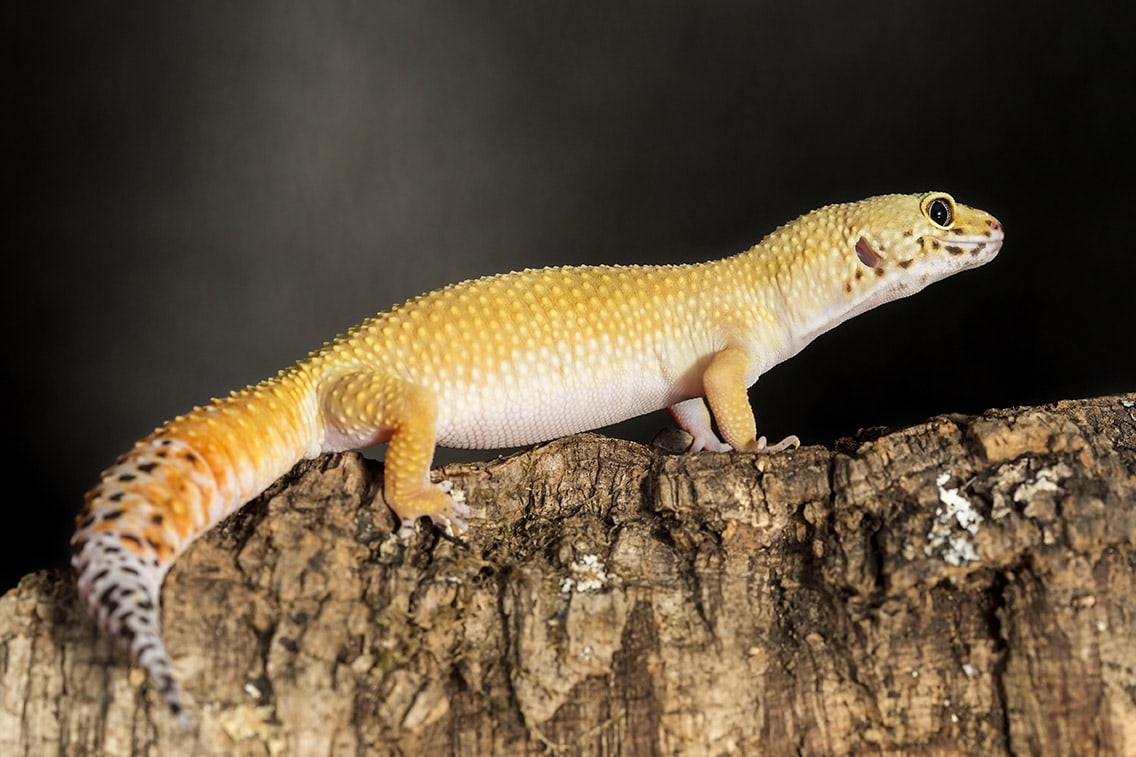The crested gecko, also known as the eyelash gecko, is native to the island of New Caledonia, which is a French territory in the South Pacific. They are low-maintenance pets, which makes them great for first-time lizard owners or children learning how to care for animals. Crested geckos were built for climbing and jumping; thanks to their toe pads, they can move vertically with ease. Their prehensile tails also assist them with keeping their balance. If you provide your geckos with plenty of room and opportunities for climbing, they will thrive.
The Vivarium
Let’s begin by discussing your crested gecko’s vivarium. The vivarium should be at least 20 gallons tall, but the larger, the better. If you have more than one crested gecko, you can house up to three of them in a 20-gallon vivarium. Keep in mind that males can be territorial, so it’s best to house only one male per tank. You can get vivariums made out of a variety of materials, but you may find that a glass vivarium with a screen top works best. You should provide your gecko with a variety of items for climbing at different heights and locations throughout the vivarium. Some things you might include are bamboo, vines, and branches.
You should also provide plants for your crested gecko to hide under and climb on. Both artificial and living plants will work well and enhance your gecko’s environment. Keep reading to learn about some of the best plants you can purchase for your crested gecko’s vivarium.
Quick Glance at the Winners of 2024
| Image | Product | Details | ||
|---|---|---|---|---|
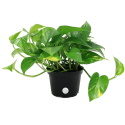
|
Pothos (Epipremnum aureum) |
|
Check Price | |
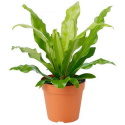
|
Bird’s Nest Fern (Asplenium nidus) |
|
Check Price | |
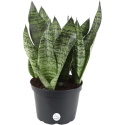
|
Snake Plant or Mother-in-Law’s Tongue (Sansevieria trifasciata) |
|
Check Price | |
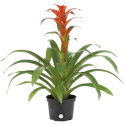
|
Bromeliads (Bromeliaceae) |
|
Check Price | |
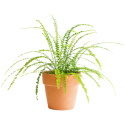
|
Lemon Button Fern (Nephrolepis cordifolia) |
|
Check Price |
The 10 Best Plants for a Crested Gecko Vivarium
1. Pothos (Epipremnum aureum)
Pothos, otherwise known as devil’s ivy or golden pothos, is a member of the arum family and is native to Southeast Asia. In nature, these vines can reach up to 40 feet long, although indoor pothos plants tend to be no more than 6 to 10 feet long. These plants are popular for gecko vivariums because of their sturdy vines and large leaves, which are ideal for climbing and hiding under. They tend to do best in large vivariums because of how fast they can grow. If you place your pothos plant in the lower level of your gecko’s vivarium, it will provide him with the perfect hiding spot. All in all, we think this is the best plant for a crested gecko vivarium you can buy.
2. Bird’s Nest Fern (Asplenium nidus)
Bird’s nest ferns are epiphytic, which means they grow on other things, such as tree trunks and other plants. They thrive in humid and warm places, which makes your crestie’s vivarium an ideal home for them. Bird’s nest ferns grow in tight, nest-like circles that are great for your gecko to hide in, though they aren’t great plants for climbing. These plants are best placed in the center of a vivarium since they will grow both tall and wide.
3. Snake Plant or Mother-in-Law’s Tongue (Sansevieria trifasciata)
Sansevieria plants are native to southern Asia, Africa, and Madagascar and come from the same plant family as the asparagus. Like pothos and Bird’s nest fern, these plants are very low-maintenance and can tolerate low light as well as drought. These plants are called the “snake plant” because of the “snakeskin” pattern of green and yellow stripes on its leaves. They are very attractive and quite low-maintenance plants that can make a great addition to your crestie’s vivarium. However, if you want a plant that is suitable for climbing, you may want to look at other options.
4. Bromeliads (Bromeliaceae)
There are many different species of bromeliads, but the most commonly used bromeliad species for crested gecko vivariums are Guzmania, Neoregalia, and Vriesea. While you may not have heard of these varieties, they belong to the same family as pineapples and Spanish moss. These are unusual-looking plants whose leaves grow into a rosette-like shape. They are lovely tropical plants that may flower in shades of yellow, orange, pink, and red. Bromeliads are another type of epiphytic plant that cling to other plants and structures to grow. They will do best when placed toward the back of the vivarium.
5. Lemon Button Fern (Nephrolepis cordifolia)
This plant has a pleasing lemon scent, which is what gives it its name. The lemon button fern is a great option if you’re looking to brighten up your gecko’s vivarium; its bright green “button” leaves will definitely add a cheery look to your crestie’s environment. However, like other ferns, this plant is not a climbing plant. Instead, you may find that the lemon button fern works best as a background plant.
6. Creeping Fig or Climbing Fig (Ficus pumila)
Creeping figs (or climbing figs) are perfect for the back of your vivarium. They are attractive and very easy to grow—so much so, in fact, that you may find yourself having to prune these plants fairly often to keep them under control. Don’t expect these plants to serve as climbing structures for your cresties, but they will certainly add to the overall aesthetic of your vivarium.
7. Elephant Ear (Alocasia polly)
Elephant ears are large, striking plants that can come in green, red, or purple. Not only are these beautiful plants, but they are also ideal plants for a crested gecko who loves to climb. They have large leaves that can easily support a crestie. Elephant ears come in many different sizes, so you’ll want to make sure you’re getting a variety that will work for your gecko’s vivarium; some of these plants can grow up to 8 feet!
8. Petra (Codiaeum variegatum)
The petra, or croton, is an evergreen shrub that comes in bold shades of red, pink, yellow, and orange. This native of southern Asia and the Pacific Islands is a beautiful plant that will certainly add a lot of character to your gecko’s vivarium. It is a very sturdy plant; your gecko will love climbing its broad leaves. Like many other plants on this list, the petra is a tropical plant that thrives in humid climates. Even though your gecko’s vivarium is the ideal climate for petra, it may take a while for this plant to adjust to its new environment at first. Don’t worry if it initially drops and then re-grows its leaves.
9. Weeping Fig (Ficus benjamina)
A native to Australia and Asia, the weeping fig tree is an ideal plant for terrariums and vivariums because it is so hardy. Keep in mind that all ficus species are not suitable for a vivarium because they are too large; however, the ficus benjamina is an exception to that rule. They are excellent plants for climbing, but note that the branches on younger weeping figs may not be quite thick enough to support your gecko.
10. Chinese Evergreen (Aglaonema)
Chinese evergreens are natives of Southeast Asia. Because of their origins as rainforest plants, they have adapted to survive with low light. They have beautiful leaves that can support your crestie, but you should know that they are only really suited to the largest vivariums; they can grow to be about 3 feet tall and will easily take over a small vivarium. Chinese evergreens have an exotic appearance, but they are less finicky than some of the other colorful plants on this list. Because these plants are so low-maintenance, they could be a great option for someone who is new to gardening.
Conclusion
If you’re looking for plants to add to your crestie’s vivarium, there are many great options out there. Do your research before purchasing a plant to ensure it matches your gardening skillset. You should also be intentional about ensuring that your new plant(s) will fit your gecko’s vivarium. Whichever plants you choose, your crestie will enjoy a living space that mimics their natural habitat and gives them the chance to do what they do best: climb!
Related reads:
- How Big Do Crested Geckos Get? (Size + Growth Chart)
- 12 Types of Crested Geckos: Morphs, Colors, & Traits (With Pictures)
- Is Your Gecko Male or Female? 4 Ways to Tell the Difference (With Pictures)
Featured Image Credit: Dirk Ercken, Shutterstock
